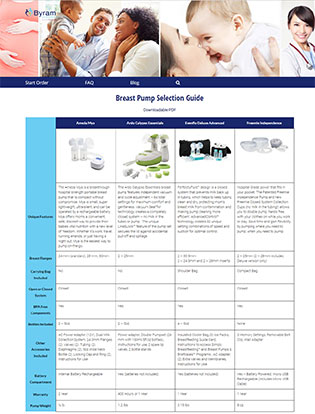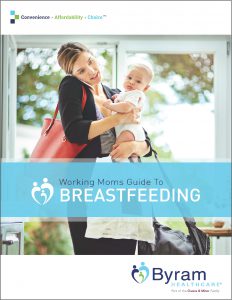What to Know About Vaginal Birth After Cesarean Delivery
Welcoming a new life into the world is a transformative experience, and for some mothers, the journey involves considering a vaginal birth after cesarean (VBAC). While the idea of attempting a VBAC was once surrounded by concerns about potential complications, medical advancements and a better understanding of individual circumstances have paved the way for safer, more educated decisions. To help you better understand your options, we'll cover everything you need to know about a vaginal birth after cesarean.
What is Vaginal Birth After Cesarean (VBAC)?
A vaginal birth after cesarean (VBAC) is when you give birth vaginally following a previous cesarean section (c-section) birth. A c-section occurs when your doctor makes either a transverse/horizontal incision (side-to-side) or a vertical incision (up-and-down) on your abdomen and uterus to deliver your baby. In the past, it was believed that undergoing a trial of labor after cesarean birth (TOLAC) could put too much pressure on the scar tissue and cause complications during delivery. Although there are still some risks of serious problems, your doctor can help you better understand whether you're a good candidate for VBAC and cover all of the risks and benefits so you can make an educated decision.
Is it Safe to Have Vaginal Deliveries After a C-Section?
Generally speaking, it's safe for women who meet certain criteria to deliver vaginally after a previous c-section. However, this is not a guarantee and will vary greatly from person to person. According to the American College of Obstetricians and Gynecologists (ACOG), VBACs are safe... under the right conditions. These conditions tend to depend on the type of incision you received, the number of c-sections you've had, the hospital you choose to deliver at, and any underlying conditions you may have. Unsuccessful TOLACs can be traumatic for many expecting mothers, so it's important that you make sure the risks don't outweigh the benefits of VBAC by discussing your circumstances with your doctor. Still, the American Pregnancy Association (APA) reports that 60% to 80% of women who had a c-section with a previous pregnancy go on to have a successful vaginal delivery.
How the Type of C-section Incision Affects Your Risk of Complications
Some doctors believe that the type and location of the cesarean scar on your uterus and abdomen can affect the chances of a successful VBAC. A low transverse incision is the most common type of incision. It's made across the lower abdomen and is usually associated with the lowest risk of uterine rupture.
A low vertical incision runs from about your belly button down; a high incision is when the cut is closer to the upper part of the uterus. A low vertical incision has a higher risk of rupture than a low transverse incision, but the highest risk is with a high vertical incision. Regardless of the external scar, you may be unable to tell where the cesarean scar on the uterus is, so it's essential to confirm with your medical records. If you're interested in undergoing a VBAC, talk to your healthcare provider early in your pregnancy to better understand your circumstances and determine if you are at high risk or not.
Uterine Rupture: The Risk of Natural Birth After Previous Cesarean Delivery
Uterine rupture is a rare but serious complication that can occur during pregnancy, labor, or delivery. It involves a tear or opening in the uterus wall, the organ that houses and nourishes your developing baby. Uterine rupture can lead to severe consequences for both the mother and the baby and requires immediate medical intervention. However, according to recent studies, the risk of a ruptured uterus in women with prior cesarean delivery is fairly low—about 0.9%.
Still, if your uterus ruptures, it can result in serious health risks to both you and your baby. These can include things like:
- Excessive blood loss
- Blood clots
- Bladder damage
- Hysterectomy
- Infection
- Fetal fatality
- Maternal fatality
To help reduce the risk of fatality, VBACs should take place in hospitals that are prepared to handle these risks. You should never try to do a home delivery after a prior c-section. A VBAC should take place in a medical facility that can also handle an emergency c-section, just in case.
Who is Eligible for VBAC?
-
Every woman has a unique health history, so you should discuss VBAC options with your doctor. During your discussion, your doctor will consider the state of your current pregnancy. If you have no potential complications, you may be eligible to try VBAC if:
- You have no uterine abnormalities
- Your cesarean scar is the only uterine scar
- You've had no previous uterine ruptures
- You've had no more than two previous c-sections
- You've had low transverse incision c-sections
- You've already had a successful vaginal birth before
Benefits of VBAC
For many women, the benefits of a VBAC may outweigh the risks. This is something that should be discussed early in pregnancy with your doctor, but some of the benefits of vaginal delivery include:
- Lowering risk factors associated with a c-section
- Faster postpartum recovery
- Boosted fetal immune system from "good" bacteria in birth canal
- Vaginal birth may be able to help clear your baby's lungs
- No abdominal surgery
- Less blood loss
- Women can experience vaginal delivery
Who Should Avoid Vaginal Birth After Cesarean Delivery?
VBAC attempts should be avoided by women who don't meet the eligibility criteria. While uterine ruptures are rare today, they can be life-threatening for both you and your baby and are simply not worth the risk.
If you're expecting multiples (i.e., twins or triplets), your doctor may advise you against VBAC, as this can increase the risk of uterine rupture.
Women with certain health conditions or circumstances should not try to deliver their next baby vaginally, as it can increase the risk of complications such as uterine rupture and bowel or bladder injury. These include:
- Preeclampsia
- Diabetes
- Heart disease
- Placenta previa
- Other problems with the placenta
- Genital herpes
- Preterm labor or delivery
- Obesity
- Induced labor
- Congenital conditions
- Fetal heart rate issues
- A large baby
- Short interpregnancy intervals (less than 18 months)
- Older than 35
- Previous high vertical c-section
- Previous uterine rupture
- Uterine surgery that left scarring
Trying to have a vaginal birth after cesarean with any of these risk factors can increase your risk of uterine rupture and a repeat c-section. It's important to take precautions and follow your doctor's advice. Although you may want to attempt to have a successful VBAC, if your doctor advises against it, it's best to listen.
How to Prepare for a Successful VBAC
If you're pregnant and want to have a vaginal birth after cesarean—and your doctor has helped you weigh the risks and benefits—there are a few things you can do to prepare for the delivery of your baby.
First, make sure that you talk to your doctor as early as possible—ideally during your very first prenatal visit. This gives you enough time to understand the risks and weigh your options. You should also ensure that you're flexible, as unforeseen circumstances may arise that lead to an emergency c-section. Your doctor and your birthing team should be prepared for this to help reduce serious risks.
With that being said, every VBAC should take place in a hospital, as when you go into labor, you need to have an emergency team available in case of complications. Remember that some hospitals or doctors may not offer VBAC, so it's important to find a health care provider early.
Finally, there are sometimes options to take a childbirth class on VBAC. Ask your doctor for recommendations near you and sign up to help you prepare.
To help you get ready for the arrival of your little one, don’t forget to get your free breast pump through insurance from Byram Healthcare. Contact one of our specialists today to learn more or get started with your order.





